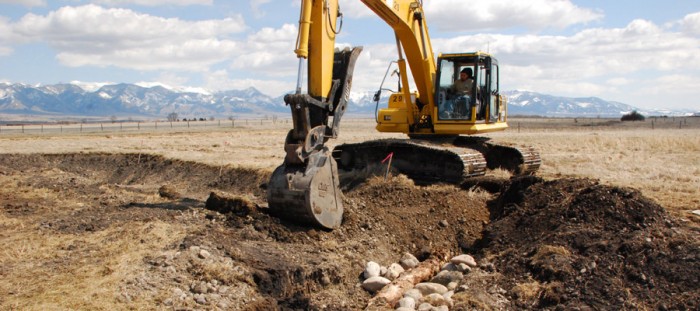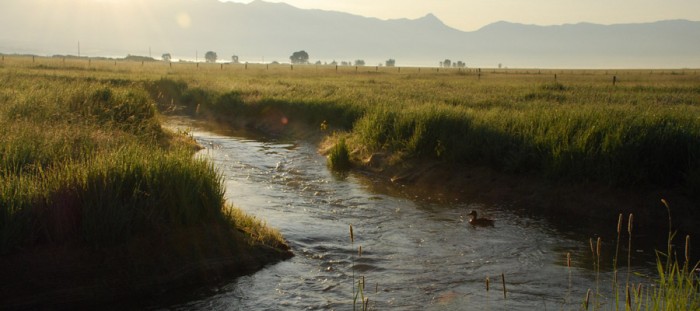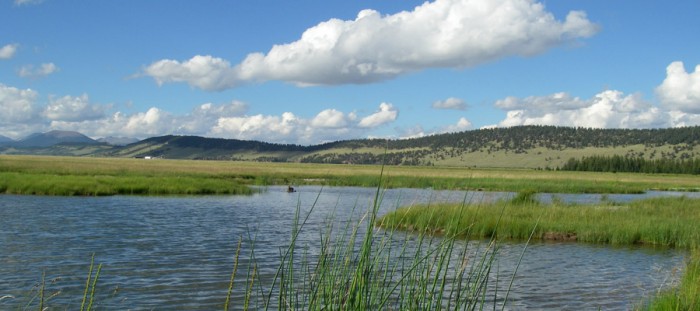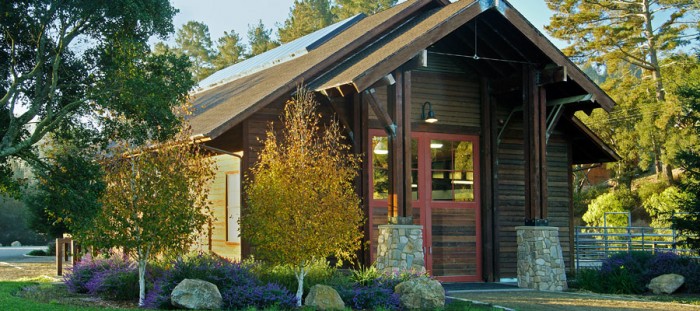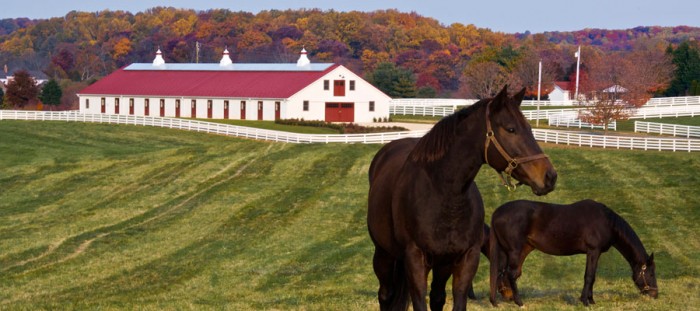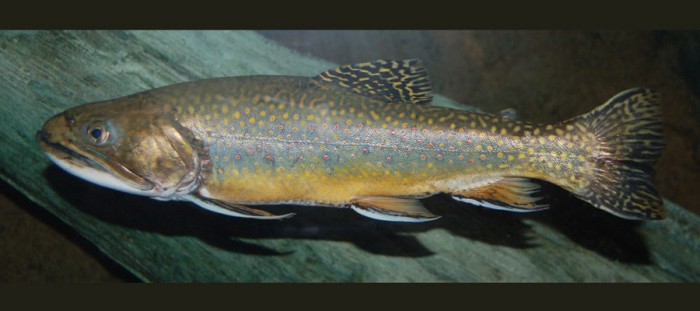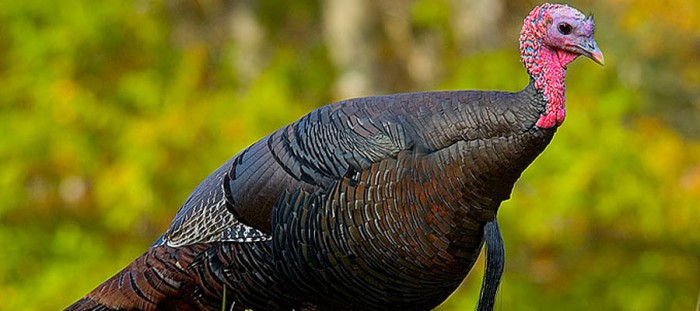With all the hype surrounding the new documentary “Where the Yellowstone Goes” (presented by FSC affiliate Trout Headwaters), we got to thinking about water scarcity issues facing the American West. After all, headlines like “Arizona Counties Under Water Restrictions,” “Tomato Shortages Blamed on Drought,” and “Cattle Deaths Caused by Lack of Water” have become a fixture in the news media.
Environmental activists and many communities are attempting to address these concerns by encouraging farmers to sell their water rights, often for much more than the market value of the crops they would have grown. Rather than being used to irrigate water-intensive crops, the water is instead sent to needy cities or simply allowed to run its natural course, supporting aquatic habitats in the process. In essence, such programs serve as a windfall not only for the landowners, but also for the aquatic habitats that have long suffered from water shortages.
Seems like a no-brainer, right? Unfortunately, it’s not that simple. Though the landowners come out ahead with minimal effort on their part, the communities that live or die by agriculture see their incomes cut off when farmers let their lands lie fallow. For example, according to an illuminating New York Times article, there are only 450 farmers in California’s Imperial Valley but half the jobs held by the 174,000 residents are tied to agriculture. When farmers stop producing, the local economy withers.
Many argue, convincingly, that these communities never should have been established in the first place since the land can’t naturally support them without the use of man-made infrastructure. However, many of these communities have been there for over a century and could result in the large-scale displacement of people if the agricultural operations that supported them were shuttered.
Luckily, while these philosophical debates are had, there are many things we can do to protect the water supply without drastically changing how we use it in the meantime. For example, by daylighting streams (bringing them out of underground pipes and up to the surface), landowners can not only promote more natural flows, they can also promote the permeation of the water into underground aquifers, which protects stream flows during periods of low rainfall. By planting vegetation on the edges of streams, landowners can also reduce erosion while also increasing natural filtration of the water. Another benefit of both of these actions is the promotion of aquatic species, which can result in better fishing!
We would love to hear from you to get your ideas on how to balance protecting our valuable aquifers while also protecting the communities that rely on them.
(By bringing this piped stream back to the surface, Trout Headwaters restored this dry, barren land to a lush paradise. The end result of Trout Headwater’s daylighting effort. Stunning difference, eh?)
This post comes from Mike Sprague of FSC affiliate Trout Headwaters. If you live in the Chesapeake Bay watershed, please tell us your thoughts on the implementation of the Bay TMDL and the use of nutrient trading to achieve that.
A recent article in the Washington Posts highlights a wedge that is growing between environmental groups working to clean-up the Chesapeake Bay. Environmental groups are clashing over the inclusion of nutrient trading in the EPA’s comprehensive plan to reduce pollution in the bay. Threats of lawsuits and pulled funding could derail the plan.
The Washington Post reports about the plan, “If it unravels because of a legal challenge, or lack of support from the states charged with implementing the cleanup, it might take 10 years to draft another plan to stop millions of tons of pollution from flowing into the bay, according to the [Chesapeake Bay] foundation.”
Under a nutrient trading program, farmers who exceed pollution reduction goals set by the EPA would receive credits they could sell to corporations such as coal-fired power plants that fail to reach their own reduction goals.
In theory, the program would help farmers pay for expensive crop covers and buffers to soak up rain. Storm runoff from farms is a major problem because it carries nitrogen from fertilizers and phosphorus from animal waste into streams and rivers that flow to the bay.
Riverkeeper group members and others say that nutrient trading is a shell game that will allow more pollution to creep into the bay. They say that because of lax farm regulations in bay watershed states — Virginia, Maryland, West Virginia, Pennsylvania, Delaware and New York — the EPA would have no sure way of knowing whether farmers have met pollution reduction goals.
The most ardent backers of the EPA’s aggressive new pollution diet — the Choose Clean Water Coalition of 230 groups, the Chesapeake Bay Foundation and the Natural Resources Defense Council — view the pollution diet as the Chesapeake’s last hope.
Such a splinter argument between environmental groups could be a major threat to years of limited progress in the bay clean-up effort.
You can read the full story at the Washington Post.
Today’s post comes from John Blackburn of FSC affiliate Blackburn Architects. If you have any questions about the design of your own barn, leave it in the comments below and we’ll make sure it gets to him. Also, make sure to click on the link to the full transcript below…lots of great insights from John!
Quite a few years ago, I participated in a web chat (remember those?) with the folks at EquiSearch. During the chat, a few chatters presented me with questions about their barn projects, which ranged from “how to’s” regarding initial planning stages or “what now’s” after building the basic framework. For old time’s sake, I thought I might share the chat’s transcript. For the sake of those reading today, I’d like to encourage any and all of you to ask away with questions or to present design issues of your own. To give you a sample of the questions asked, you can read some of them below:
gatsbysmom – How much roof overhang do you recommend for a barn in the South?
Blackburn – Gatsbysmom…roof overhangs are very helpful in the south for shading…if you have Dutch doors where horses can stick their heads out, it allows them to do it…make sure the roof is projected out far enough so runoff doesn’t drop on the horses’ heads…a good dimension is 3.5 feet.
EQS – John – when you take on a very large projects such as Lane’s End, what are the instructions or parameters given to you? Can we learn anything from the approach of the big farms?
Blackburn – EQS…there are basic principles to keep in mind…you want to place the barn to minimize the amount of lead time between barn and paddock..place your smaller paddocks closer to the barn, and the larger ones farther away..also, isolate horses from vehicular traffic so prevent paths from crossing.
Who are some of the horses best known by the general public? Secretariat? Seabiscuit? Perhaps even Affirmed?
In a few years, you’ll be remiss if you don’t add Neville Bardos to that list. Neville Bardos, you ask? Yes, Neville Bardos.
You see, Neville Bardos and his trainer, Boyd Martin, are currently vying to defy all odds and represent the U.S. in the London Olympics 3-Day Eventing. Neville, in particular, has now twice escaped death–the first time when he disappointed as a racing horse and again a few years ago when he was rescued (by Martin) from a burning barn.
Today, the duo have become a force to be reckoned with in the world of 3-Day Eventing. Also known as horse trials, this event combines three of the major disciplines within equestrian competition and rolls them up into one, comprehensive event. These disciplines include dressage, cross-county, and show jumping. Rankings are calculated based on a combination of judge’s scores and time.
Having contributed to the pre-planning assessment of The Fork Farm & Stables, we here at FSC were particularly interested in Neville and Boyd’s performance at The Fork’s Heritage Days a few weeks ago. With Fork riders Rebecca Howard (Canada) and her horse Riddle Master as well as Sinead Halpin (United States) and her horse Manoir de Carneville both on their respective countries’ short lists to compete in London, The Fork has established itself as a powerhouse in the equestrian world. Indeed, after a strong seventh-place finish there, Neville and Boyd are on track to achieve their goal of traveling to London this summer. In the meantime, Rock Center with Brian Williams recently aired a great segment on the two. You can see it here.
And in case any of you were worried: yes, the movie rights to Neville Bardos’s story have already been sold. We hope to see you in the theaters!
With spring well on its way toward summer and as we shake off the last of the chilly mornings, we’re looking forward to getting back out on the water, saddling up for a trail ride, and shooting some clays at the local course. It only takes a few minutes to remind us why there are few better arguments for preserving the rural sporting lifestyle than by simply getting outside and enjoying the plethora of activities available.
In this edition of the Field Sport Concepts newsletter, we invite you to learn about our approach to assisting landowners in identifying opportunities for investing in their legacy. You will also find stories about Sporting Heritage Corp’s collaboration with Beretta, McKee Carson’s digital “storybooks,” and Trout Headwater’s commitment to sustainable energy at their Montana headquarters. If there are any topics that you’ve been puzzling over (like how to restore a stream to promote trout populations or what land use elements should be considered in order to maximize the value of your land), don’t hesitate to get in touch and we will be happy to send you information or to include it in the next edition of the newsletter.

Company News
– Established as a collaboration between premiere firearms-maker Beretta and Field Sport affiliate Sporting Heritage Corp., the Beretta Trident Program recognizes the best of the best in shooting destinations worldwide. Read more…
– Seeking to inform landowners about the myriad of considerations involved in rural land improvement, McKee Carson has released a series of digital “storybooks” meant to provide an insight into the land planning process. Read more…
– Practicing what it preaches, Trout Headwaters makes a commitment to sourcing 100-percent clean and renewable energy to power its Paradise Valley, Minnesota headquarters. Read more…
Our Expertise
With the economic pressures facing landowners, identifying public and private sources of financing for investing in one’s legacy is a critical step in ensuring the long-term viability of rural properties. Read more…
We are eager to collaborate with you as you seek to enhance your holdings and/or service offerings. Click below to learn how we can help you.
– Field Sport Enthusiasts
– Farm & Rural Land Owners
– Conservations
– Ranch & Farm Brokers
– Equestrian Enthusiats
– Land Developers
In The Field
– Defining Falconry – With anecdotes about falconers running naked through the snow and their birds soiling neighbor’s living rooms, author Tim Cahill gives a humorous account of his discovery of the true definition of falconry. Read more…
– Ask the Equestrian Architect – Responding to readers’ inquiries, John Blackburn of Blackburn Architects addresses concerns about incorporating flexibility for future growth and drainage solutions that ensure horses’ safety. Read more…
– Running Colter Ranch – Having taken a dry, poorly managed aquifer and restored it to a valuable wetland with incredible biodiversity, Trout Headwater’s principal Mike Sprague discusses the evolution of Running Colter Ranch. Read more…
We also wanted to mention that we are busily working to update the Field Sport Concepts website. The new design will more fully showcase the range of services offered by the FSC affiliates as well as provide a more user-friendly experience for the growing number of tablet users among you. Keep an eye out for the new site, coming early this summer!
We sincerely appreciate your readership and invite you to get in touch should you have any questions or if you are considering making improvements to your own property.
All the best,
Bob McKee
With I’ll Have Another’s win this weekend at the 138th Kentucky Derby, all eyes are now on the Baltimore, MD-based Preakness Stakes coming up in a few weeks. While many of you will be looking for I’ll Have Another to continue in his pursuit of the elusive Triple Crown (or, perhaps you’ll be looking for Bodemeister to avenge his runner-up finish at the Derby), we will have our eyes on Tiger Walk of Sagamore Farm.
To many in the world of thoroughbred racing, Sagamore Farm is a familiar name. Boasting such champions as Native Dancer (aka the Galloping Grey Ghost), Discovery, Bed o’ Roses, and, more recently, Shared Account, Sagamore has a long history of producing world-class racehorses. However, until recently, Sagamore had fallen into disrepair after Alfred Vanderbilt sold it in 1986.
In 2007, Maryland native Kevin Plank purchased the farm and committed to restoring Sagamore’s winning history. Partnering with FSC affiliates Blackburn Architects and McKee Carson, Plank oversaw the renovation of the farm, including a 16-stall foaling barn, a 20-stall broodmare barn, a brand new 24-stall training barn, and a number of indoor and outdoor training tracks.
The efforts are clearly paying off. In 2010, the farm celebrated a win at the Breeders’ Cup World Championship Fillies and Mare Turf (GI) with Shared Account. Now, on the eve of the 137th Preakness Stakes, current Sagamore champion, Tiger Walk, is in the running to compete as a starter.
You can be sure we’ll be glued to the screen when the gates open in a couple of weeks. Let us know who you’ll be watching!
“No one is born with an innate understanding of nature and how to relate to it in a civilized world. It’s acquired knowledge.”
If you think back to your K-12 education, or perhaps think about what your kids are learning in the classroom, it probably focused mainly on the four pillars: Math, Science, English, and Social Studies. You may have taken other electives, but few if any of your classes probably cultivated a deep appreciation for the outdoors. In fact, we would bet you were more likely to be looking out the window than you were to actually be outside feeling the sun and the wind and the grass.
A program led by the Pennsylvania Fish and Boat Commission, Department of Education, and state council of Trout Unlimited is trying to change all of it. And it’s wildly successful.
The program, Trout in the Classroom, is exactly what its same suggests: students raise brook trout from eggs to fingerlings in classroom aquariums and release them into nearby waterways. The best part of the program is that its educational benefits extend into many different areas of study. At many of the over 200 schools now participating in the program, entire grades take on the project of raising the trout, with teachers from each subject offering a multidisciplinary approach to understanding the life-cycle and significance of trout and fish in general.
To learn more about the program, or to get information on how to get your school involved, check out these stories from the Pittsburgh Post-Gazette and the Trout in the Classroom website.
Photo courtesy of Derek Ramsey
Yep, wild turkeys.
There are only two species of wild turkeys in the world, and we’ve got them both right here in North America. Probably should be protecting them, eh?
Luckily for us, both turkey species regularly use wetlands at some point in their life cycle, so preserving their habitat doesn’t have to happen at the expense of other species. Indeed, wetland and grassland habitat provides ideal conditions both for brood rearing and for finding food. While many migrating and wintering waterfowl use moist-soil habitats for foraging in the fall, turkeys regularly feed in those same habitats in the spring once the flood waters have receded and a variety of vegetation starts blooming.
In order to protect the many species that use these moist-soil habitats, Ducks Unlimited has partnered with a range of public and private agencies to protect lands stretching from Mexico to Canada. Taking advantage of such programs as the Wildlife Habitat Incentive Program (WHIP) and U.S. Fish and Wildlife Habitat Partnership grants, Ducks Unlimited has been quite successful at preserving large, contiguous areas of habitat that will protect turkeys (and many other species) for generations to come.
To read more about their efforts, you can find more information by visiting the Ducks Unlimited website. If you have any photos of you bagging a wild turkey, we invite you to share the photo with us on our Facebook page!
We have a short quiz for you today. Please look at the following techniques for removing invasive species from your property, and select the one that seems to be least like the others.
a) Round-Up
b) Image Kudzu Killer
c) Goats
d) Arrest Herbicide
If you answered c) Goats, congratulations! You have successfully distinguished between chemicals and animals! Now, you may be wondering why goats were included in a list of products clearly designed with the specific purpose of removing unwanted plants, especially since goats are, well, goats. We included them because goats are actually some of the most effective (and ecologically-friendly!) removers of invasive species because of their capacity to eat a huge amount of plant matter without destroying surrounding, desirable plants.
In fact, goats are so effective at removing invasives that Zach Richardson, an intern at FSC affiliate McKee Carson, recently received a grant from the University of Georgia to use goats in order to remove English Ivy, Privet, and other aggressive native species in an effort to restore native forests adjacent to an important waterway on UGA’s campus. Nicknamed the Tanyard Creek Chew Crew, the goats are not only effective at removing the plants, they are also an ecologically-friendly alternative to heavy machinery and pesticides. Further, they also serve as an engaging tool for educating students, faculty, and staff about the need for restoring native life, especially in environmentally-sensitive areas.
To learn more about Zach’s program, check out the video below. You can also follow their progress by visiting the Chew Crew’s Facebook page.
What do Bacon and conservation have in common? Well, everything, actually.
If you take a look at the latest edition of The Land Report, you find an article about Louis Moore Bacon and his lifelong commitment to preserving some of the most important and pristine lands across the U.S. Having inherited his conservationist’s conscious from his grandfather, Louis T. Moore, Bacon further developed his passion for the outdoors while at Vermont Middlebury College. While most students would head home for breaks, he and a favorite professor would spend time hunting and hiking in the nearby Green Mountains.
In 2007, Bacon purchased the 172,000 acre Trinchera Ranch from the Forbes family with the promise that he would continue the ranch’s conservation and environmental legacy. Providing a home for multiple generations of employees, supporting local schools, and pioneering innovative wildlife and forest management practices, the ranch embodies Bacon’s commitment to the environment and the people around him. In recent years, he has been negotiating with two major power companies to abandon their plans to run large-scale transmission lines across Trinchera. While one of the companies has backed out, the other is still holding firm and has yet to agree to a compromise.
In addition to the article on Bacon, this edition of The Land Report has a number of great stories on the deal of the year, the country’s best brokerages, and many more. Enjoy!

